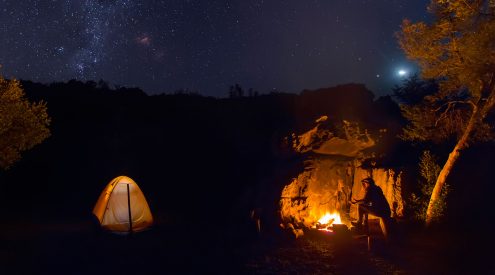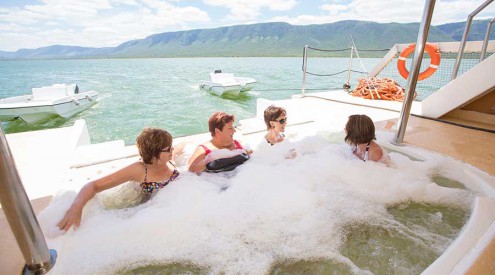Is Etosha National Park, Namibia worth it? Well, yes… and no. But we’re not there yet. There’s a long, boring drive to sit through first, so hold your fire and your comments.
From the glorious Khwai Community Development campsite (the subject of my last blog) on the northern border of the Moremi Game Reserve in Botswana’s Okavango Delta we skirted Moremi on the wide, generally good-quality gravel road south to Maun.
Maun is one of my least favourite towns in Africa. It’s OK if you like dust, goats, donkeys and overpriced camp grounds, but it’s a necessary stop over when travelling in or out of the delta. From Maun we drove up the western side of the swamps along the edge of the panhandle.
Mrs Blog and I drove the panhandle a couple of years ago and swore we’d never do it again. It’s a long boring stretch of nothingness – unless you like donkeys. To while away the hours (it’s about 500 km or so), Mrs B counted donkeys and broke her 400 record from the last trip.
However, we had some friends who wanted to go that way, and it more or less suited the itinerary, so off we went, reluctantly. It’s probably worth the drive just to get to the breezy serenity of the deck overlooking the Okavango at Drotsky’s Cabins. Just as well Drotsky’s is so nice as there are precious few places to stop along the panhandle.
We decided, however, to press on and cross the border into Namibia near Shakawe. On the other side we stopped at Ngepi Camp. Ngepi has a beautiful location – the river is much wider and less papyrus-choked here than at Drotsky’s so view wise it’s even better.
Ngepi, which has been nicely reviewed in the current edition of Getaway Magazine, is a quirky, funky, laid-back place – toilets built into trees, jokey signs and a hippy vibe of love and peace.
The only other minor gripe I have about Ngepi is that its lovely grassy campsites are fenced off, so you can’t drive a vehicle onto them. Memo to Ngepi management: laid back is cool, but this is not the 1960s – lots and lots of people have vehicles with roof tents, so why not cut a little graveled bay or two into each site so people can drive in and flip their tents open onto the grass?
Next stop en-route to Etosha was Rundu. Much of the chatter and plenty of the shop signs in this steamy town just across the river from Angola was in Portuguese. Rundu’s a nice place to visit but you mightn’t want to stay there. It’s a hectic town so we headed out of it, to a lovely camp called Samsitu, about 15 kilometres further along the river. We had the place to ourselves.
We carried on via Grootfontein and finally reached Etosha. I love Etosha – I really do – but it’s become more expensive and more crowded each time I’ve visited over the past 15 years.
On the plus side, the game is plentiful and it’s easy to spot, especially when we were there at the end of the dry season. Animals congregate around the waterholes – including the fantastic floodlit waterholes at each of the three camps, Namutoni, Halali, and Okaukuejo.
We had great sightings of lion and leopard out in the park, as well as huge herds of Zebra and springbok in the central grassy plains areas – game in numbers I’d not seen since our visit to the Serengeti last year. In the evenings black rhino came to visit the camp waterholes, and a pair of honey badgers brazenly patrolled the Halali camp ground in broad daylight.
The interesting thing about Etosha is how empty the park seems, given how crowded the camps are.
Namutoni, Halali and Okaukuejo are small camps by, say, Kruger standards, but the Namibian Wildlife Resorts (NWR the privatized body that runs the accommodation and bookings) sure knows how to pack people in.
Part of the problem (or the benefit, if you’re NWR), is that camp sites are charged on a basis of eight people staying there. You pay NAD400 for a camp site, and then NAD100 per person. That makes it NAD600 per night to camp if there’s just two of you! On the flip side, if you’re in a big group, such as an overland tour, it make sense to camp in Etosha.
On our first night in the cramped Namutoni Camp we had an overlander with about 20 people crammed into the one site next to each other (they had most likely booked two sites but were too late to get two together). It’s hard not to make a lot of noise and disturb your neighbours when you have ten bell tents crammed into a site that would comfortably take two caravans.
Halali’s camp ground was more open and less crowded, but also perpetually wind and sand swept. The visiting honey badgers, however, made the Lawrence of Arabia backdrop bearable, and the swimming pool is big and inviting. In fact, we spent most of our time in Halali by the pool.
We stayed a night in one of the rondavels near the waterhole at Okaukuejo, though rondavel hardly did the place justice. Ours was called a Waterhole Chalet which was actually behind the ring of Waterhole Luxury Chalets. It had waterhole glimpses, rather than a view.
These once basic (a la Kruger) national parks huts have been redecorated and re-born as quasi private game lodge suites. There are ethnic fabrics and wall prints, walk-in mosquito nets, and tea-and-coffee-making facilities. The rooms come with a restaurant breakfast included, and a price tag to match. Ours cost NAD2000 per night! Annoyingly, these waterhole chalets don’t have a braai, so guests are clearly expected to brave the feeding frenzy of hungry tourists at the restaurant buffet.
Look, the Etosha camps were clean, and well kept; it was just that they were overflowing with people. We stayed in each camp for three nights and, interestingly, in the camp grounds we watched virtually the entire population change over each morning. People, it seems, tend to spend only one night in each camp. No wonder given the price.
On top of the accommodation prices was a daily entry fee. While this is standard in South African parks these days, in Etosha the woman behind the desk scoffed at the concept of a yearly Wild Card when I asked her if such a thing existed in Namibia. After all, why would they want to discount their parks repeat visitors when they clearly get millions of one-nighters?
So, was it worth it?
Yes, because Etosha, with its rocky desert landscapes, incredible game, and huge expanse of white nothingness in the middle is so different to everywhere else in southern Africa that it’s one of those places you have to see, whatever the cost.
But is it worth it, based on what you pay for a two bed hut or twenty backpackers partying-then-snoring in your ear?
If you’ve been I’m keen to hear your thoughts…

















